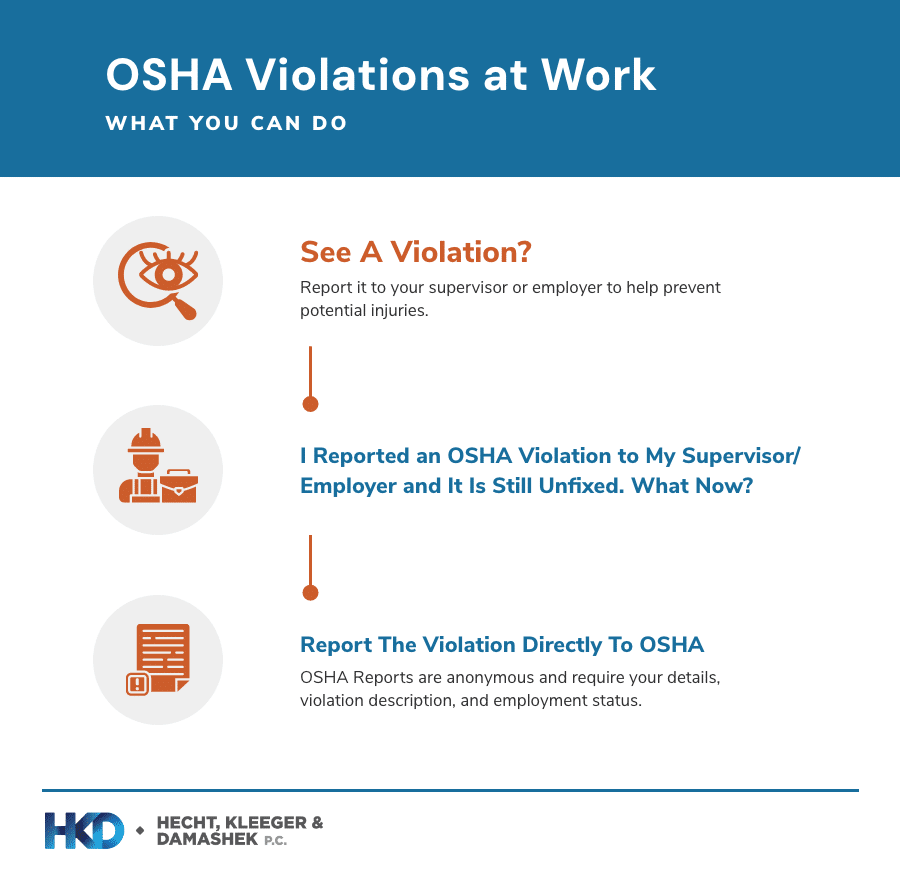Before the creation of the Occupational Safety and Health Administration, safety training was not regulated. There was an increased chance of a work injury and fatalities on job sites. However, since its inception in 1971, OSHA has found that workplace fatalities have decreased by 60%, even as employment has grown significantly.
Even though the administration is tasked with setting the standards for industry safety, accidents still happen. You might be looking for financial relief if you’re hurt in an accident because your employer wasn’t following OSHA standards. Learn more about cases involving OSHA violations and if you can pursue compensation.
What Is OSHA’s Purpose?
OSHA was formed from the US Bureau of Labor Standards. The administration aims to protect workers’ rights to a safe workplace or environment. It creates rules and directives for employers to follow so their workers are safe as they work.
For instance, OSHA has standards for industries that work with dangerous chemicals, regulating the protective gear employers must provide workers. An employee exposed to hazards could face significant health risks. Employees can request work site testing to ensure they are working safely.
Why Is OSHA Important?
Some industries, like construction, face extreme risks at work. If an employer isn’t following OSHA standards, those risks are amplified. OSHA’s regulations are designed to decrease workplace accidents.
These standards are meant to stop fatal accidents in construction, like the “Fatal Four”: falls, being struck by a falling object, electrocution, or being caught between objects. OSHA regulations can increase awareness of accidents that lead to death on worksites, provide training on what conditions worksites should have, and how employees can help enforce rules on site.
What If I See an OSHA Violation at Work?
Even with the best intentions, some violations can slip through the cracks. If you spot a violation before it can injure someone, you should report it to your manager, supervisor, or employer.
You can report the violation to OSHA if it hasn’t been corrected. OSHA claims are anonymous. Your complaint should include your information for OSHA’s records, the details of the violation, details about your work, and your employment status.


What Happens after an OSHA Report?
Once OSHA receives your complaint, the administration will begin its investigation. A representative will contact your employer with details of the complaint. Your employer will have five days to respond, identifying any issues on the worksite and explaining how they corrected them.
If OSHA is satisfied with your employer’s answer, they’ll close the complaint and not conduct an on-site inspection. If they do visit the worksite and find violations, your employer faces fines and other corrective measures.
What Happens if I’m Hurt By an OSHA Violation?
You should know what to do if you’re hurt on a job site because your employer failed to follow an OSHA regulation.
First, you should report the injury to your supervisor, explaining an OSHA violation caused it. Next, get treatment. A medical provider can analyze your injuries, prescribe treatment, and give you an accurate idea of your damages.
Finally, you should call a personal injury lawyer who understands New York’s accident injury laws. In most cases, workers’ compensation benefits will cover your workplace injuries. Even if you were hurt because your employer neglected OSHA standards, New York law states you cannot sue them for the injury.
However, you might be able to pursue a third-party liability lawsuit against someone who shared responsibility for your injuries and who wasn’t your employer.
What is Third-Party Liability?
Third-party liability is a concept that someone other than yourself or your employer was responsible, at least in part, for your injury. If a defective product hurt you on the job site, you could sue the manufacturer if they didn’t provide a quality product.
Third-party liability cases allow you to seek compensation after an accident causes injuries. Unlike a workers’ compensation claim, you can sue for pain and suffering damages, along with other losses.
Who Can Be Sued in a Third-Party Liability Suit?
There could be multiple liable parties when you’re trying to determine who shared fault in the OSHA violation that injured you. Although you can’t sue your employer, you can pursue a claim against a property owner, a negligent subcontractor, a general contractor, a manufacturer, or another coworker.
Can a Personal Injury Lawyer Help My Case?
You should consider working with a New York Accident Injury lawyer if you decide to pursue a third-party liability claim. They’ll understand the laws surrounding OSHA incidents and the compensation available.
Third-party claims require evidence that the OSHA violation caused your damages, and that the third-party person caused that violation. Evidence could include an OSHA report, medical records, eyewitness statements, or conversations with your employer.
It can be challenging to calculate your true losses after an injury. There are your monetary losses, and there are also non-economic damages. Those are conceptual things like pain and suffering or mental anguish. Your lawyer can help you calculate your total losses.
Your attorney can also work with the insurance company as you pursue a settlement. In many cases, the liable party will decide to settle instead of taking the matter to trial. Your personal injury attorney will be able to represent your best interests and help you recover maximum compensation.
Call a NY Workplace Accident Lawyer
You’re entitled to compensation if you’ve been injured by an OSHA violation at work. You should turn to seasoned New York workplace accident lawyers. We at Hecht, Kleeger & Damashek, P.C., have helped clients in similar cases recover compensation. If you’re hurt at work, you might face high costs while you cannot work. Your expenses will continue to increase. We can help you pursue compensation for your injuries and provide you peace of mind as you recover.
We offer a free initial consultation. Call (212) 490-5700 or use our contact form to get started today.

